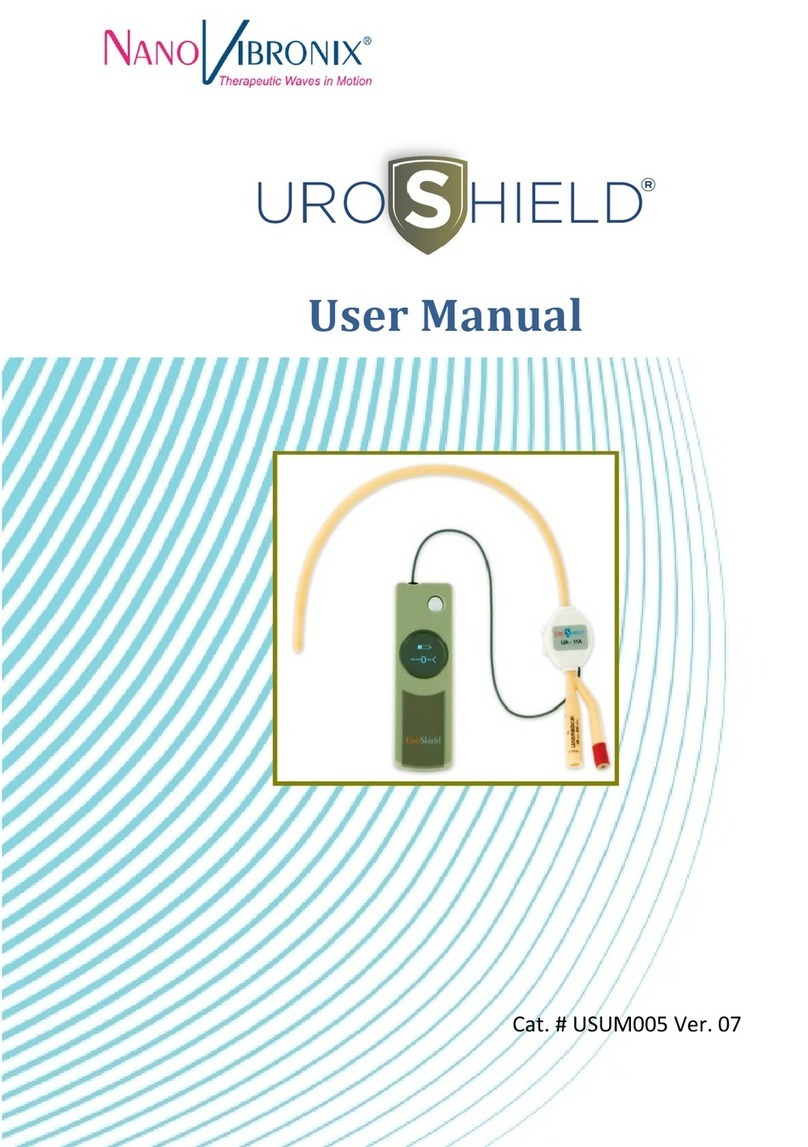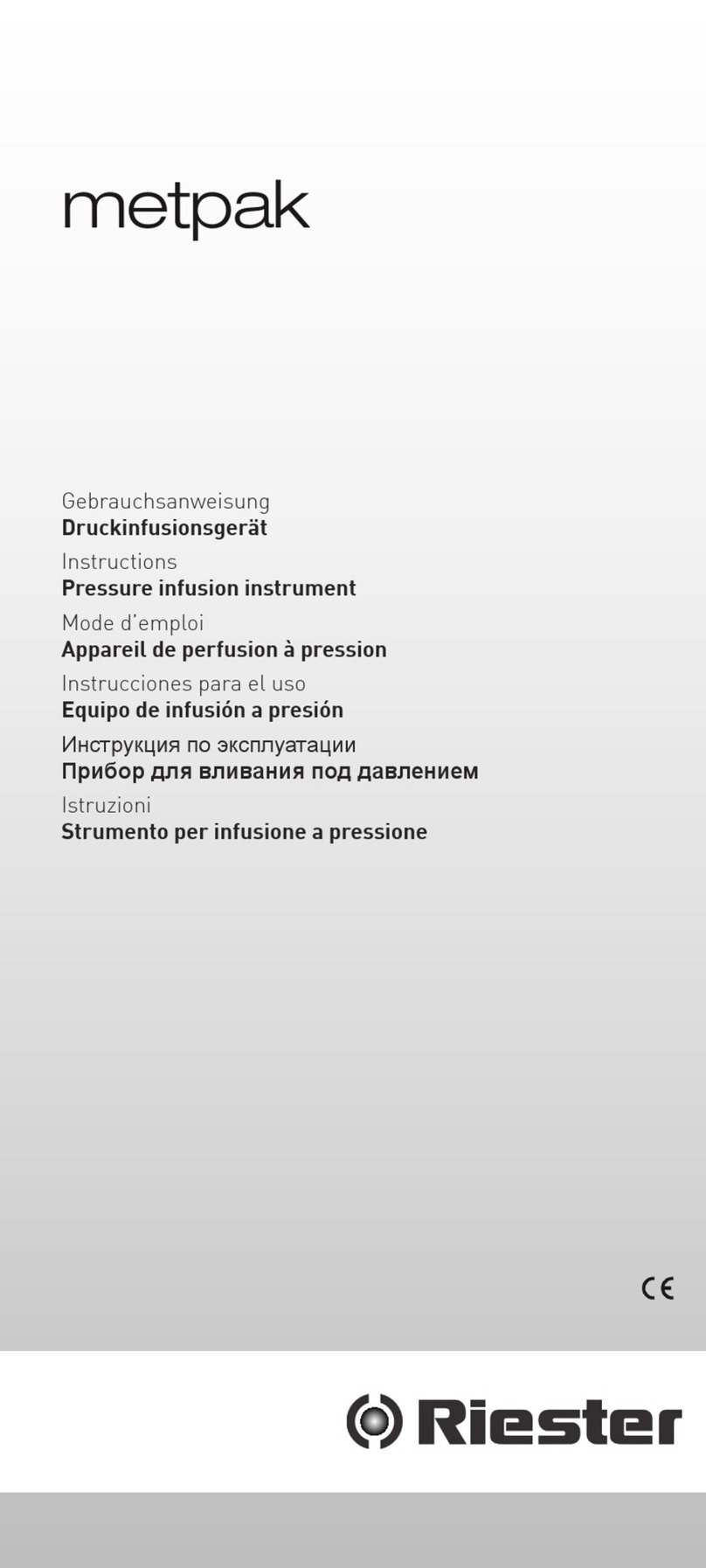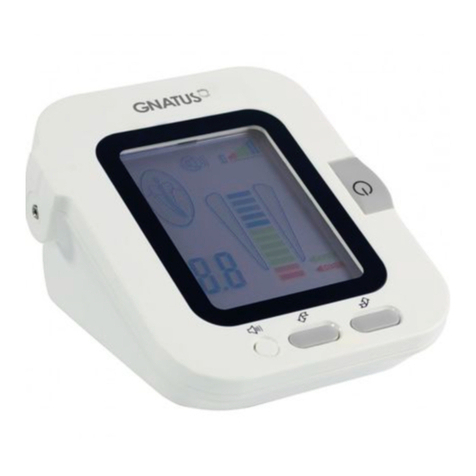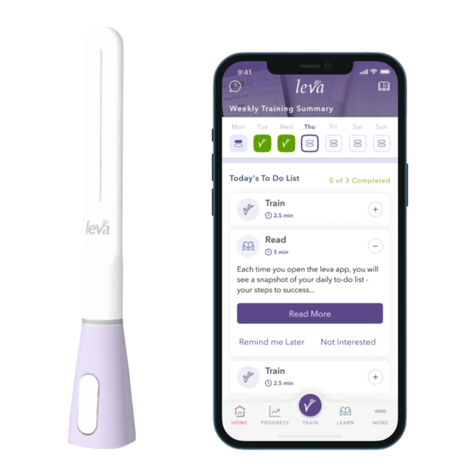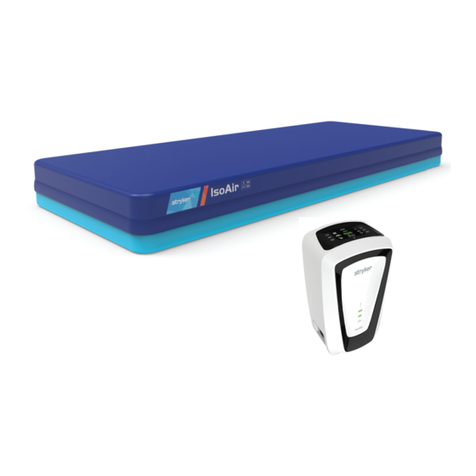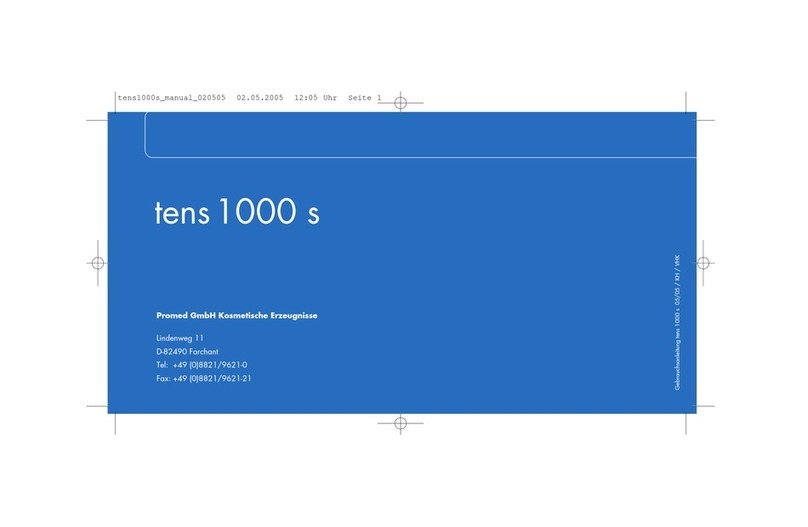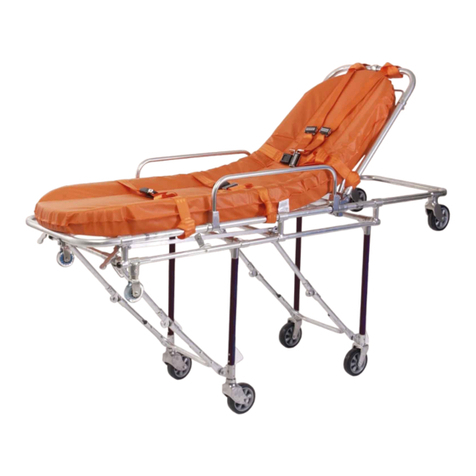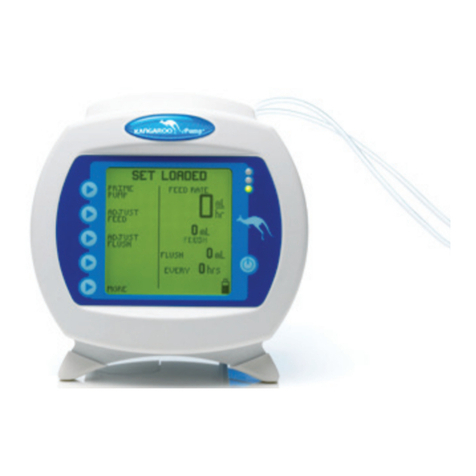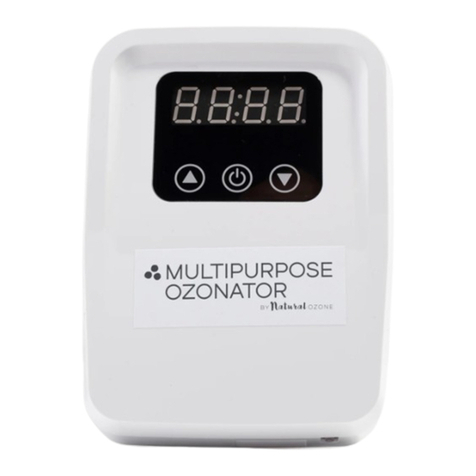ToronTek H50 User manual

s
This Manual is written and compiled in accordance with the council directive MDD93/42/EEC for medical devices
and harmonized standards. In case of modifications and software upgrades, the information contained in this
document is subject to change without notice.
The Manual describes, in accordance with the Pulse Oximeter's features and requirements, the main structure,
functions, specifications, correct methods for transportation, installation, usage, operation, repair, maintenance and
storage, etc. as well as the safety procedures to protect both the user and equipment. Refer to the respective chapters
for details.
Please read the User Manual carefully before using this product. The User Manual which describes the operating
procedures should be followed strictly.Failure to follow the User Manual may cause measuring abnormality,
equipment damage and human injury. The manufacturer is NOT responsible for the safety, reliability and performance
issues or any measuring abnormalities, human injury and equipment damage due to users' negligence of the operation
instructions. The manufacturer’s warranty service does not cover such faults.
We regret to inform you that owing to the forthcoming renovation, the specific products you received may not be
totally in accordance with the description of this User Manual.
This product is amedical device and can be used repeatedly.
WARNING:
Discomfort or pain can occur if the device is used ceaselessly, especially for microcirculation barrier
patients. It is recommended that the sensor should not be applied to the same finger for longer than
2
hours.
For special patients, there should be a more prudent inspection of the placing process. The device
should not be clipped on an edema or tender tissue.
The infrared light emitted from the device, though invisible, is harmful to the eyes. Avoid staring at
it.
The patient cannot use nail enamel or other makeup.
The patient’s fingernailsmust be clipped short.
Please refer to the related content about clinical restrictions and caution.
This device is not intended for treatment.
1.1 Instructions for Safe Operations
Inspect the main unit and all accessories periodically to ensure that there is no visible damage that may affect
the patient’s safety,and monitor the performance of cables and transducers. It is recommended that the device
should be inspected at least once a week. If there is obvious damage, stop using the device.
Necessary maintenance must be performed by qualified service engineers ONLY. Users are not permitted to
service the device by themselves.
The Oximeter must not be used together with accessories not specified in the User Manual.Only accessories
specified or recommended by the manufacturer can be used with this device.
This product is calibrated before leaving the factory.
1.2 Warning
Explosive hazard—DO NOT use the oximeter in an environment with flammable gas, such as some ignitable
anesthetic agents.
DO NOT use the Oximeter while the patient is measured by MRI and CT.
People who are allergic to rubber cannot use this device.
The disposal of this instrument and its accessories and packaging (including batteries, plastic bags, foams and
paper boxes) should follow local laws and regulations.
Please check the packaging before use to make sure the device and accessories are in complete accordance
with the packaging list or else the device may not work normally.
1.3 Attention
Keep the Oximeter away from dust, vibrations, corrosive substances, explosive materials, high temperatures
and moisture.
Stop operating the Oximeter if it gets wet.
DO NOT use the device immediately after moving it from a cold environment to a warm or humid
environment.
DO NOT operate the keys on the front panel with sharp objects.
High temperature or high pressure steam disinfection of the Oximeter is not permitted. Refer to the User
Manual in the relative chapter for instructions oncleaning and disinfection.
DO NOT immerse the Oximeter in liquid. If it needs cleaning, wipe the surface with medical alcohol using a
soft material. Do not spray any liquid directly onto the device.
When cleaning the device with water, ensure that the temperature of the water is lower than 60.
Thin or cold fingers will affect the normal measure of the patient's SpO2and pulse rate.Be sure to clip athick
finger such as the thumb or middle finger deeply enough into the probe.
DO NOT use the device on infantsor neonatal patients.
This product is only suitable for adults and children above four years old (Weight should be between 15kg-
110kg).
The device may not work for all patients. If you are unable to achieve stable readings, discontinue use.
The update period of data is less than 5 seconds. This is changeable according to different individual pulse
rates.
The waveform is normalized. Please read the measured value when the waveform on-screen is uniform and
steady-going. This measured value is the optimal value and this waveform is the standard one.
If abnormal conditions appear on the screen during the test process, pull out the finger and reinsert it to restore
normal use.
The device has alifespan of three years after the first electrified use.
The wrist strap attached to the device is made from non-allergenic material. If you are sensitive to the wrist
strap, stop using it. In addition, pay attention to the use of the wrist strap. To avoidharm, DO NOT wear it
around the neck.
The device does not have a low-battery alarm function;it only displays the low battery icon. Change the
battery when the battery energy is low.
The device does not have an alarm function. Do not use the device in situations where alarms are required.
The batteries must be removed if the device is going to be stored for more than one month or else they may
leak.
A flexible circuit connects the two parts of the device. Do not twist or pull on the connection.
The peripheral capillary oxygen saturation (SpO2)is the percentage of oxyhemoglobin (HbO2)in the total hemoglobin
(Hb) in the blood, or the oxygen concentration in the blood. It is an important bio-parameter for respiration. For the
purpose of measuring the SpO2more easily and accurately, our company developed the Pulse Oximeter. The device
can also measure the pulse rate simultaneously.
The Pulse Oximeter features a small size, low power consumption, convenient operation and portability. The patient
only needs to put one of their fingers into a fingertip photoelectric sensor for diagnosis, and a display screen will
show the measured value of Hemoglobin Saturation.
2.1 Classification:
Class II b(MDD93/42/EEC IX Rule 10)
2.2 Features
Operation of the device is simple and convenient.
The device is small in size and light in weight (total weight is about 50g including batteries) making it
convenient to carry.
The device has low power consumption. The two originally equipped AAA batteries can be operated
continuously for 20 hours.
The device will automatically power off if no signal is received for 5 seconds.
2.3 MajorApplications and Scope of Application
The Pulse Oximeter can be used to measure human Hemoglobin Saturation and pulse rate through a finger, and
indicate the pulse intensity on a bar-display. The device is suitable for use in the home, hospital (ordinary sickroom),
Oxygen Bar, and social medical organizations.
The device is not suitable for use in continuous supervision of patients.
The problem of overrating will emerge if the patient is suffering from toxicosis caused by carbon
monoxide. The device is not recommended to be used under these circumstances.
2.4 Environment requirements
Storage Environment
a) Temperature :-40~+60
b) Relative humidity :≤95%
c)Atmospheric pressure :500hPa~1060hPa
Operating Environment
a) Temperature: :10~40
b) Relative Humidity :≤75%
c) Atmospheric pressure:700hPa~1060hPa
Principle of the Oximeter: Principle of the Oximeter: for the calculation of blood oxygen level the device uses a
formula to process the data according to Lambert Beer Law and Spectrum Absorption Characteristics of Reductive
Hemoglobin (Hb) and Oxyhemoglobin (HbO2) in glow & near-infrared zones.
Operation principle of the Oximeter: Photoelectric Oxyhemoglobin Inspection Technology is applied together with
Capacity Pulse Scanning & Recording Technology so that two beams of light of different wavelengthscan be focused
onto the human nail tip through aperspective clamp finger sensor. Ameasured signal is obtained by a photosensitive
element and acquired information will be shown on-screen through treatment in electronic circuits and
microprocessors.
Figure 1. Operating Principle
3.2 Caution
1. The finger should be placed properly or else it may cause inaccurate measurement (see illustration in Figure 5.)
2. The SpO2sensor should not be used at a location or limb tied with an arterial canal or blood pressure cuff,or
receiving intravenous injection.
3. Make sure the optical path is free from any optical obstacles like rubberized fabric.
4. Excessive ambient light may affect the measuring result. This includes fluorescent lamps, dual ruby lights,
infrared heaters, direct sunlightetc.
5. Strenuous action of the patient or extreme electrosurgical interference may also affect accuracy.
6. The patient cannot use nail enamel or other makeup.
3.3 Clinical Restrictions
1. As the measurement is taken on the basis of arteriole pulse, substantial pulsating blood flow of the patient is
required. For a patient with aweak pulse due to shock, low ambient/body temperature, major bleeding, or use
of vascular contracting drugs, the SpO2waveform (PLETH) will decrease. In this case, the measurement will be
more sensitive to interference.
2. For patients with a substantial amount of staining dilution drugs(such as methylene blue, indigo green and acid
indigo blue), carboxyhemoglobin (COHb), methionine (Me+Hb) or thiosalicylic hemoglobin, and some with an
icterus problem, the SpO2determination by this monitor may be inaccurate.
3. Drugs like dopamine, procaine, prilocaine, lidocaine and butacaine may also be a major factor blamed for
serious errorsof SpO2measurements.
4. As the SpO2value serves as a reference value for judgment of anemic anoxia and toxic anoxia,some patients
with serious anemia may also report good SpO2measurement.
4.1 Display Format: Digital tube Display;
SpO2Measuring Range: 0% - 100%;
Pulse Rate Measuring Range: 30 bpm - 250 bpm;
Pulse Intensity Display: columniation display
4.2 Power Requirements: 2×1.5V AAA alkaline batteries (or rechargeable batteries),
adaptable range: 2.6V~3.6V.
4.3 Power Consumption: Lower than 25 mA.
4.4 Resolution: 1% for SpO2and 1 bpm for Pulse Rate.
4.5 Measurement Accuracy: ±2% in stage of 70%-100% SpO2, and meaningless when stage being smaller than
70%.±2 bpm or±2% (select larger) for Pulse Rate.
4.6 Measurement Performance in Weak Filling Condition: SpO2and pulse rate can be shown correctly when
pulse-filling ratio is 0.4%. SpO2error is ±4%, pulse rate error is ±2 bpm or ±2% (select larger).
4.7 Resistance to Surrounding Light: The deviation between the value measured in the condition of man-
made light or indoor natural light and that of darkroom is less than ±1%.
4.8 It is equipped with a function switch. The Oximeter can be powered off in case no finger is in the Oximeter
within 5 seconds.
4.9 Optical Sensor
Red light (wavelength is 660nm,6.65mW)
Infrared (wavelength is 880nm, 6.75mW)
One wrist strap;
Two batteries (optional);
One User Manual.
1 Safety
3 Principle and Caution
Instructions to User
2 Overview
4 Technical Specifications
5 Accessories
TORONTEK-H50 Pulse Oximeter

6 Installation
7 Operating Guide
8 Maintenance and Repair
9 Installation
10 Key of Symbols
11 Function Specification
6.1 View of Front Panel
Figure 2. Front View
6.2 Batteries
Step 1. Insert the two AAAbatteries in the right direction (refer to Figure 3.)
Step 2. Replace the cover.
Please take care when you insert the batteries. Improper insertion may damage the device.
Figure 3. BatteryInstallation
6.3 Mounting the Wrist Strap
Step 1. Put the end of the rope through the hole.
Step 2. Put another end of the rope through the first one and then tighten it.
Figure 4. Mounting the Wrist Strap
7.1 Insert the batteries then replace the cover.
7.2 Open the clip as shown in Figure 5.
Figure 5. Place Finger in Position
7.3 Insert the patient’s finger into the rubber cushions of the clip and clip the finger (make sure the finger is in the
right position).
7.4 Press the button on the front panel.
7.5 Do not shake the finger. Keep the patient still and at ease during the process.
7.6 The information will be displayed on the screen.
7.7 with the press of start button each time the device is reset and does a fresh measurement
Fingernails and the luminescent tube should be on the same side.
Change the batteries when the low-battery indicator is displayed on the screen.
Clean the surface of the device before use. Wipe the device with medical alcohol and let it dry in air. Otherwise,
clean it using a clean, dry fabric.
Use medical alcohol to disinfect the device after use so as to prevent cross infection during the next use.
Remove the batteries if the Oximeter will not be in use for a long time.
The best storage environment of the device is -40ºC to 60ºC ambient temperature and not higher than 95%
relative humidity.
Users are advised to calibrate the device termly (or according to the calibrating program of the hospital). It also
can be performed at the state-appointed agent or you can contact us for calibration.
High-pressure sterilization cannot be used on the device.
Do not immerse the device in liquid.
It is recommended that the device should be kept in a dry environment. Humidity may reduce the useful life
of the device, or even damage it.
Trouble Possible Reason Solution
The SpO
2
and Pulse
Rate are not displayed
normally
1. The finger is not properly positioned.
2. The patient’s SpO2is too low to be
detected.
1. Place the finger properly and try
again.
2. Try again; Go to a hospital for a
diagnosis if you are sure there is
nothing wrong with the device.
The SpO2and Pulse
Rate are not displayed
stably
1. The finger is not placed inside deeply
enough.
2. The finger is shaking or the patient is
moving.
1. Place the finger properly and try
again.
2. Let the patient keep calm and still.
The device can not be
turned on
1. The batteries are drained or almost
drained.
2. The batteries are not inserted properly.
3. Malfunction of the device.
1. Change the batteries.
2. Reinsert the batteries.
3. Please contact the local service
center.
The display turns off
suddenly
1. The device will power off
automatically when it gets no signal
within 5 seconds.
2. The batteries are almost drained.
1. Normal.
2. Change the batteries.
Symbol Description
Type BF
Warning – See User Manual
SpO2%The pulse oxygen saturation(%)
PRbpm Pulse rate (bpm)
The battery voltage indication is deficient (change the battery in time avoiding the
inexact measure)
1. No finger inserted
2. An indicator of signal inadequacy
Battery positive electrode
Battery cathode
Power switch
SN Serial number
Alarm inhibit
WEEE (2002/96/EC)
IP22 Ingress of liquids rank
Display Information
Display Mode
The Pulse Oxygen Saturation(SpO
2
)
Digital
Pulse Rate(BPM)
Digital
Pulse Intensity (bar-graph)
Digital bar-graph display
SpO
2
Parameter Specification
Measuring range
0%~100%, (the resolution is 1%).
Accuracy
70%~100%:±2% ,Below 70% unspecified.
Optical Sensor
Red light (wavelength is 660nm)
Infrared (wavelength is 880nm)
Pulse Parameter Specification
Measuring range
30bpm~250bpm (the resolution is 1 bpm)
Accuracy
±2bpm or
±
2% select larger
Pulse Intensity
Range
Continuous bar-graph display, the higher display indicate the
stronger pulse.
Battery Requirement
1.5V (AAA size) alkaline batteries × 2 or rechargeable batteries
Battery Useful Life
Two batteries can work continually for 20hours
Dimensions and Weight
Dimensions
57(L) ×31(W) ×32(H) mm
Weight
About 50g (including the batteries)
9 Troubleshooting
Other ToronTek Medical Equipment manuals
Popular Medical Equipment manuals by other brands

Stryker
Stryker Crossfire 2 manual

Alpine HC
Alpine HC Opera Signature Profiling Bed Installation guide and technical specifications
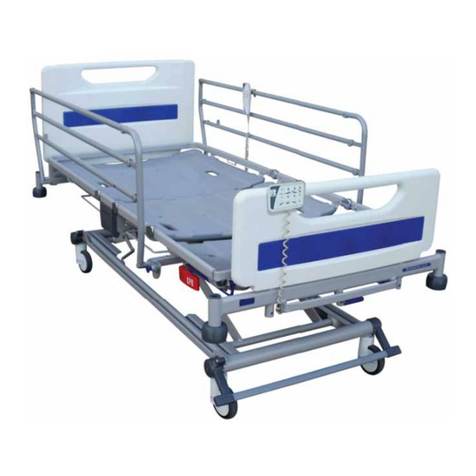
Arjo
Arjo Enterprise 5000X Instructions for use
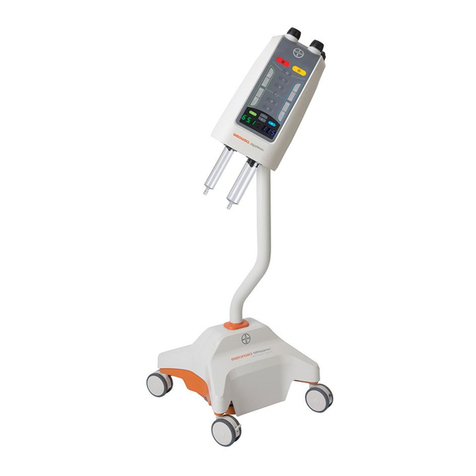
Bayer HealthCare
Bayer HealthCare MEDRAD MRXperion Operation manual
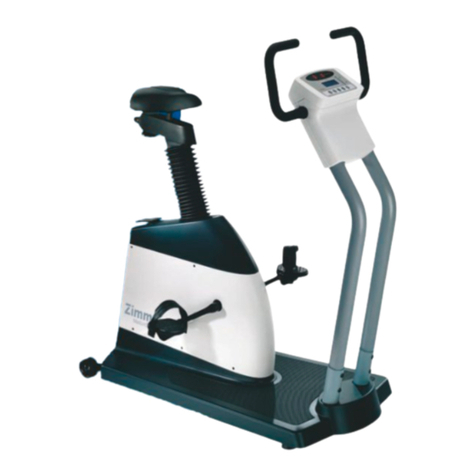
Zimmer
Zimmer ergo k user manual
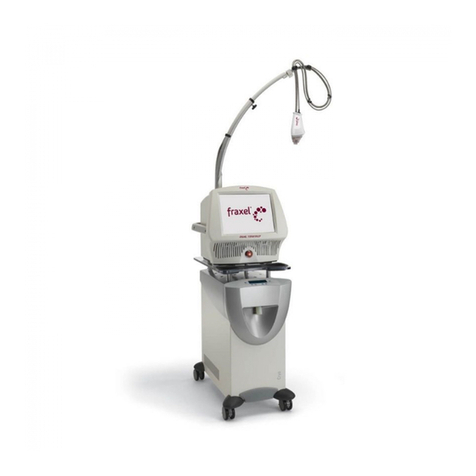
Solta Medical
Solta Medical Fraxel 1550 Operator's manual


